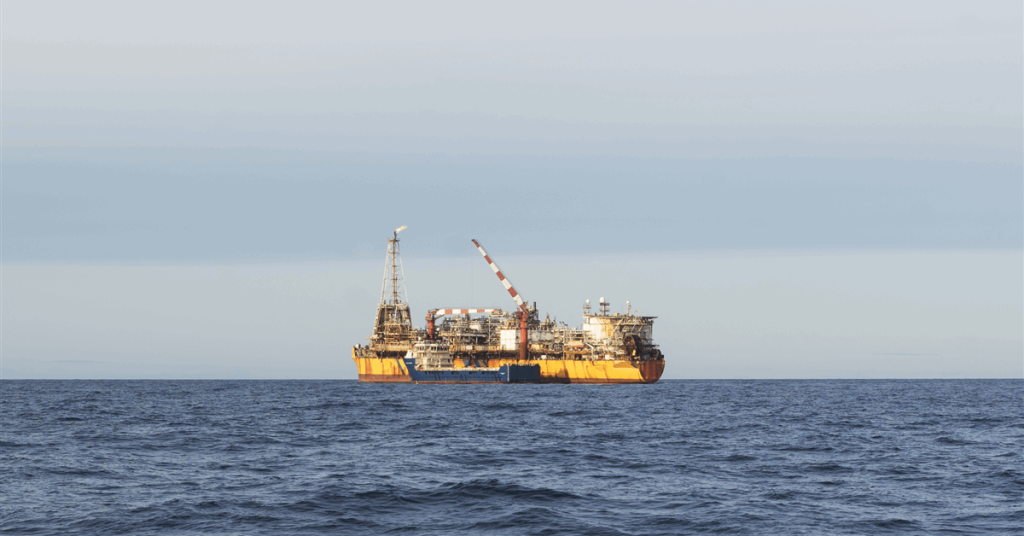Floating production, storage and offloading vessel (FPSO) Almirante Tamandare, which serves one of several developments in the Buzios field in Brazil’s Santos Basin, has reached its capacity of 225,000 barrels per day (bpd).
That set the highest rate for a single platform in Petroleo Brasileiro SA’s (Petrobras) history, the company said in a statement online.
“[T]he record confirms expectations that the field will soon become Petrobras’ largest in production”, Petrobras said. “Buzios is the second-largest field in production volume in the country, behind only the Tupi Field.
“The super Buzios field, discovered in 2010, has gigantic dimensions: its thickness is equivalent to the height of Sugarloaf Mountain and its area corresponds to twice the size of Guanabara Bay. The magnitude of the field allowed Petrobras to also pursue larger production units”.
“The company’s expectation is to surpass, in this field, by 2030, the milestone of 1.5 million bpd… The Buzios field has five more platforms contracted and under construction to start production in the coming years, three of which are high-capacity”, Petrobras added.
“The Buzios 7 Project foresees eight producing wells, and the mark of 225,000 bpd was reached with five of these wells”.
Petrobras exploration and production director Sylvia Anjos said, “Another important factor, besides the volume, is the quality of the oil from the Buzios field, which has substantial reserves of light oil”.
Almirante Tamandare started production in February, serving Buzio7, the sixth development started up in the field.
In a separate press release Monday, Petrobras said Buzios has now surpassed 900,000 bpd.
“In the first half of this year we brought more wells into production than in the whole of last year, among them wells from Buzios with remarkable results that allowed us to reach yet another record, surpassing the mark of 900,000 bpd”, said Petrobras president Magda Chambriard.
FPSO Almirante Tamandare, leased from SBM Offshore, can also process 12 million cubic meters (423.78 million cubic feet) a day of natural gas and store 1.4 million barrels of crude. It is equipped with closed flare to minimize greenhouse gas emissions and heat recovery devices to reduce energy consumption, according to the Buzios partners.
Also in February Petrobras announced a new discovery in the western part of the field. Well 9-BUZ-99D-RJS, drilled to a water depth of 1,940 meters (6,364.83 feet), is a new accumulation in a zone below the main reservoir. The well is 189 kilometers (117.44 miles) off the coast of Rio de Janeiro, according to Petrobras.
“Tests conducted from a depth of 5,600 meters confirmed the presence of oil reservoirs through electrical profiles, which will later be characterized through laboratory analyses”, it said.
“The discovery reaffirms the pre-salt potential of the Buzios field”.
Petrobras operates Buzios with an 88.99 percent stake. CNOOC Ltd. owns 7.34 percent through wholly-owned subsidiary CNOOC Petroleum Brasil Ltda. CNODC Brasil Petroleo e Gas Ltda. holds 3.67 percent.
To contact the author, email jov.onsat@rigzone.com
What do you think? We’d love to hear from you, join the conversation on the
Rigzone Energy Network.
The Rigzone Energy Network is a new social experience created for you and all energy professionals to Speak Up about our industry, share knowledge, connect with peers and industry insiders and engage in a professional community that will empower your career in energy.
element
var scriptTag = document.createElement(‘script’);
scriptTag.src = url;
scriptTag.async = true;
scriptTag.onload = implementationCode;
scriptTag.onreadystatechange = implementationCode;
location.appendChild(scriptTag);
};
var div = document.getElementById(‘rigzonelogo’);
div.innerHTML += ” +
‘‘ +
”;
var initJobSearch = function () {
//console.log(“call back”);
}
var addMetaPixel = function () {
if (-1 > -1 || -1 > -1) {
/*Meta Pixel Code*/
!function(f,b,e,v,n,t,s)
{if(f.fbq)return;n=f.fbq=function(){n.callMethod?
n.callMethod.apply(n,arguments):n.queue.push(arguments)};
if(!f._fbq)f._fbq=n;n.push=n;n.loaded=!0;n.version=’2.0′;
n.queue=[];t=b.createElement(e);t.async=!0;
t.src=v;s=b.getElementsByTagName(e)[0];
s.parentNode.insertBefore(t,s)}(window, document,’script’,
‘https://connect.facebook.net/en_US/fbevents.js’);
fbq(‘init’, ‘1517407191885185’);
fbq(‘track’, ‘PageView’);
/*End Meta Pixel Code*/
} else if (0 > -1 && 75 > -1)
{
/*Meta Pixel Code*/
!function(f,b,e,v,n,t,s)
{if(f.fbq)return;n=f.fbq=function(){n.callMethod?
n.callMethod.apply(n,arguments):n.queue.push(arguments)};
if(!f._fbq)f._fbq=n;n.push=n;n.loaded=!0;n.version=’2.0′;
n.queue=[];t=b.createElement(e);t.async=!0;
t.src=v;s=b.getElementsByTagName(e)[0];
s.parentNode.insertBefore(t,s)}(window, document,’script’,
‘https://connect.facebook.net/en_US/fbevents.js’);
fbq(‘init’, ‘1517407191885185’);
fbq(‘track’, ‘PageView’);
/*End Meta Pixel Code*/
}
}
// function gtmFunctionForLayout()
// {
//loadJS(“https://www.googletagmanager.com/gtag/js?id=G-K6ZDLWV6VX”, initJobSearch, document.body);
//}
// window.onload = (e => {
// setTimeout(
// function () {
// document.addEventListener(“DOMContentLoaded”, function () {
// // Select all anchor elements with class ‘ui-tabs-anchor’
// const anchors = document.querySelectorAll(‘a .ui-tabs-anchor’);
// // Loop through each anchor and remove the role attribute if it is set to “presentation”
// anchors.forEach(anchor => {
// if (anchor.getAttribute(‘role’) === ‘presentation’) {
// anchor.removeAttribute(‘role’);
// }
// });
// });
// }
// , 200);
//});

